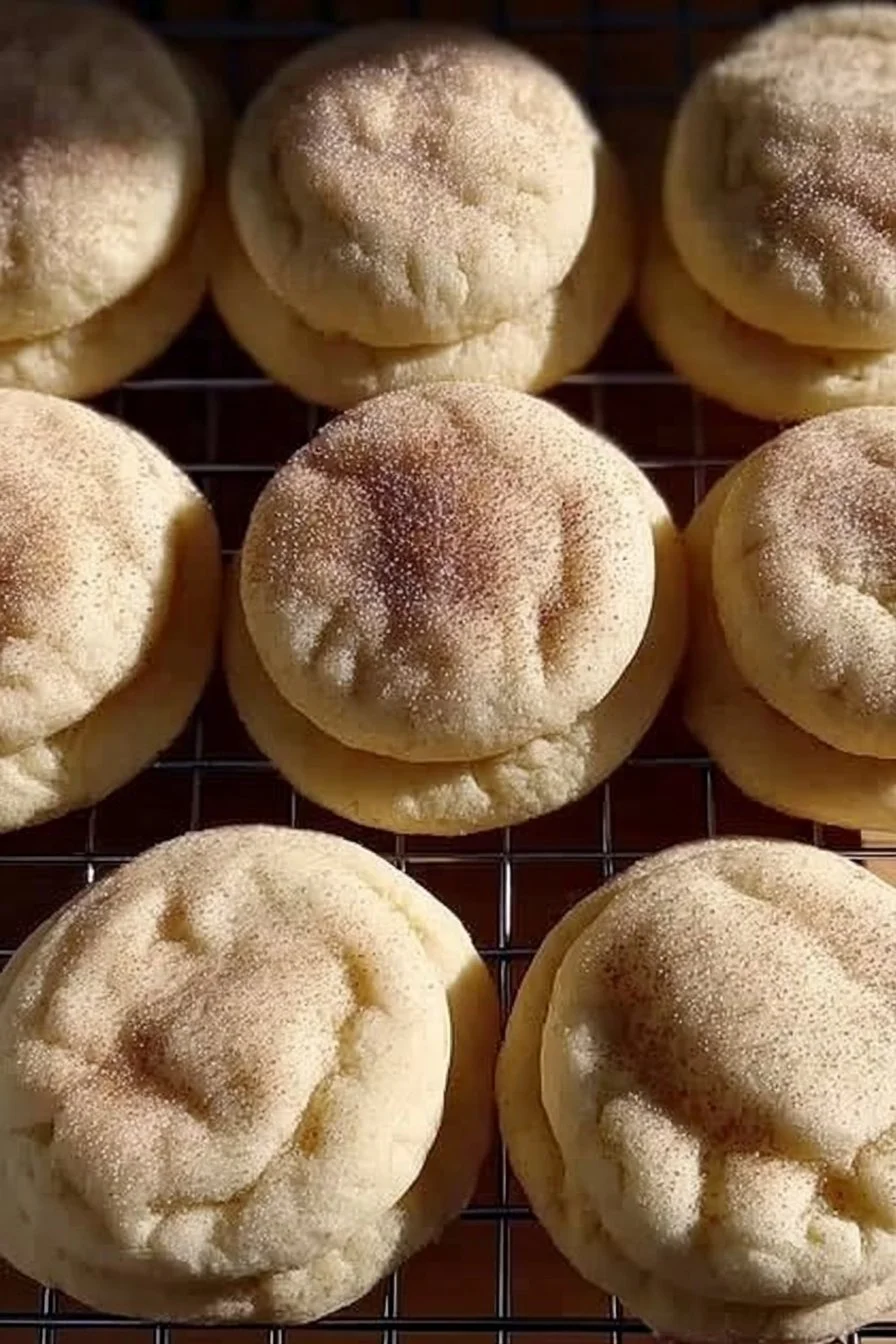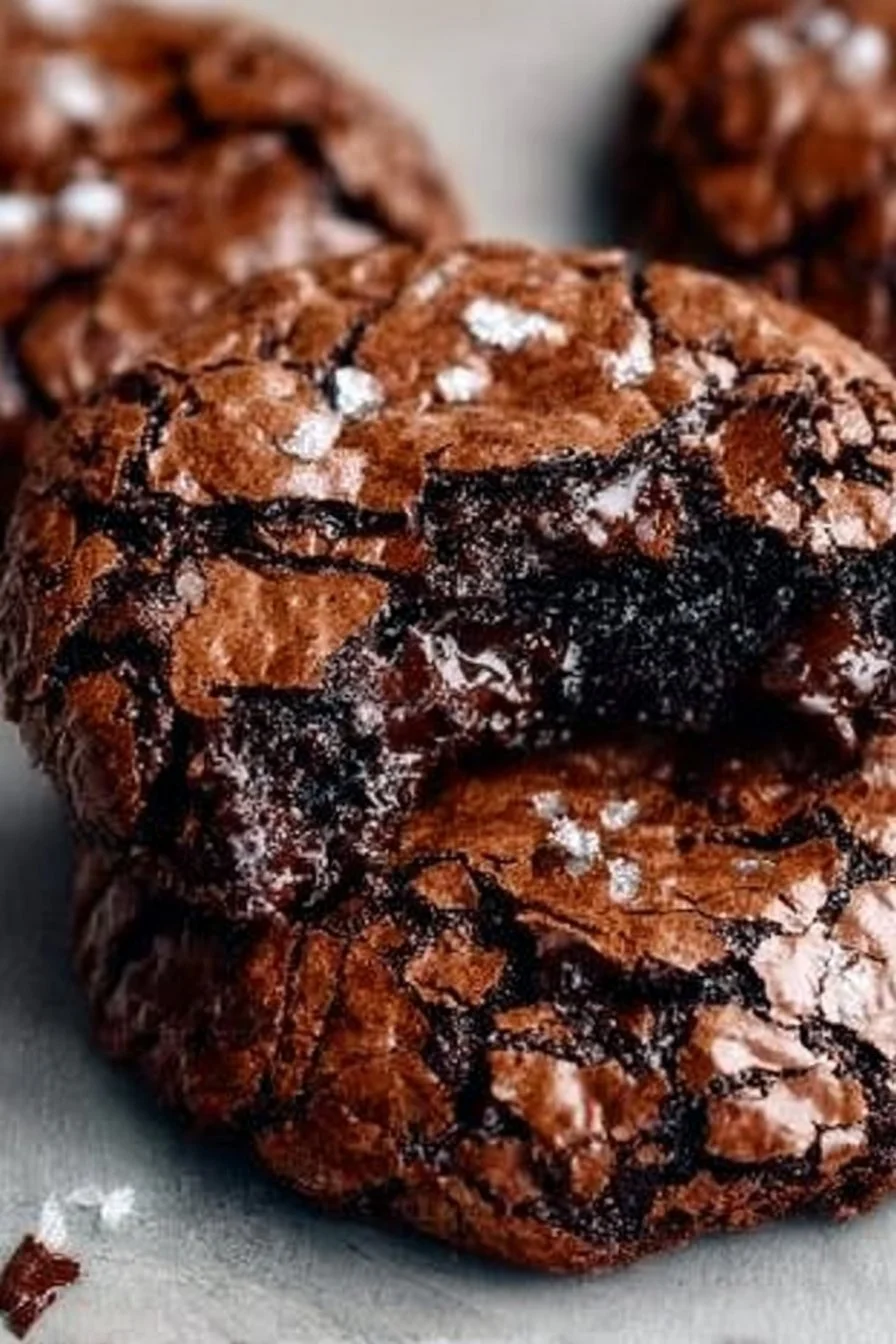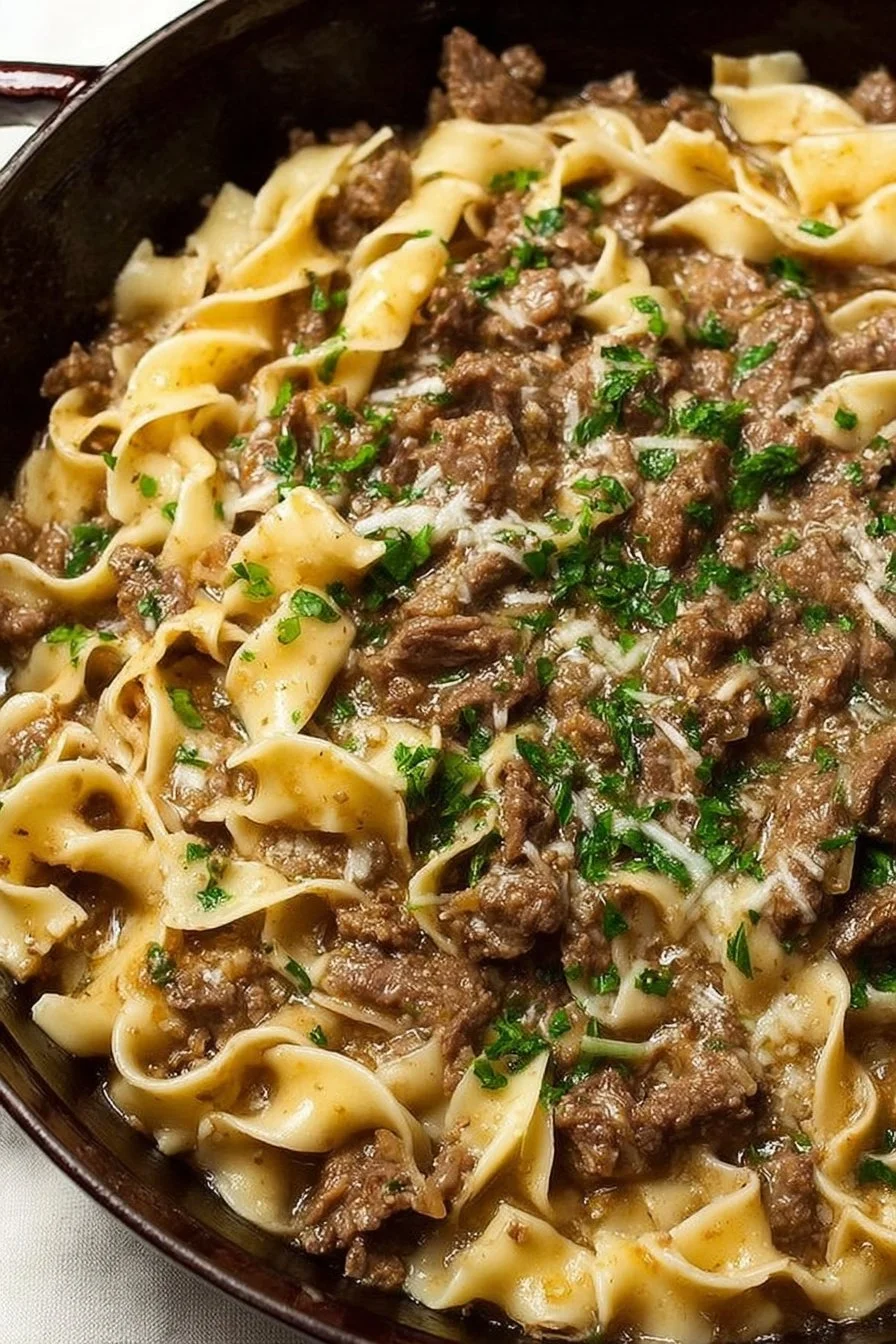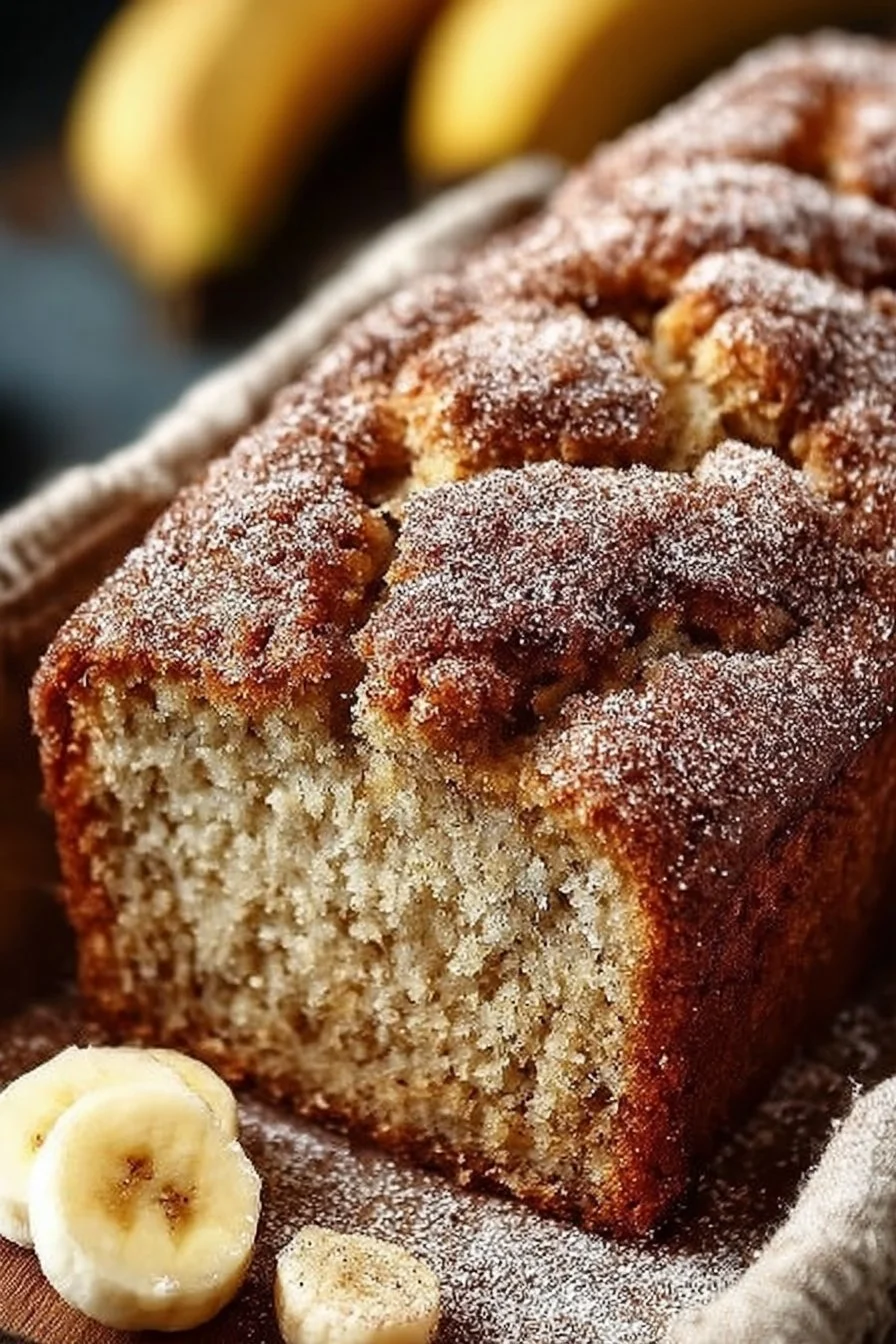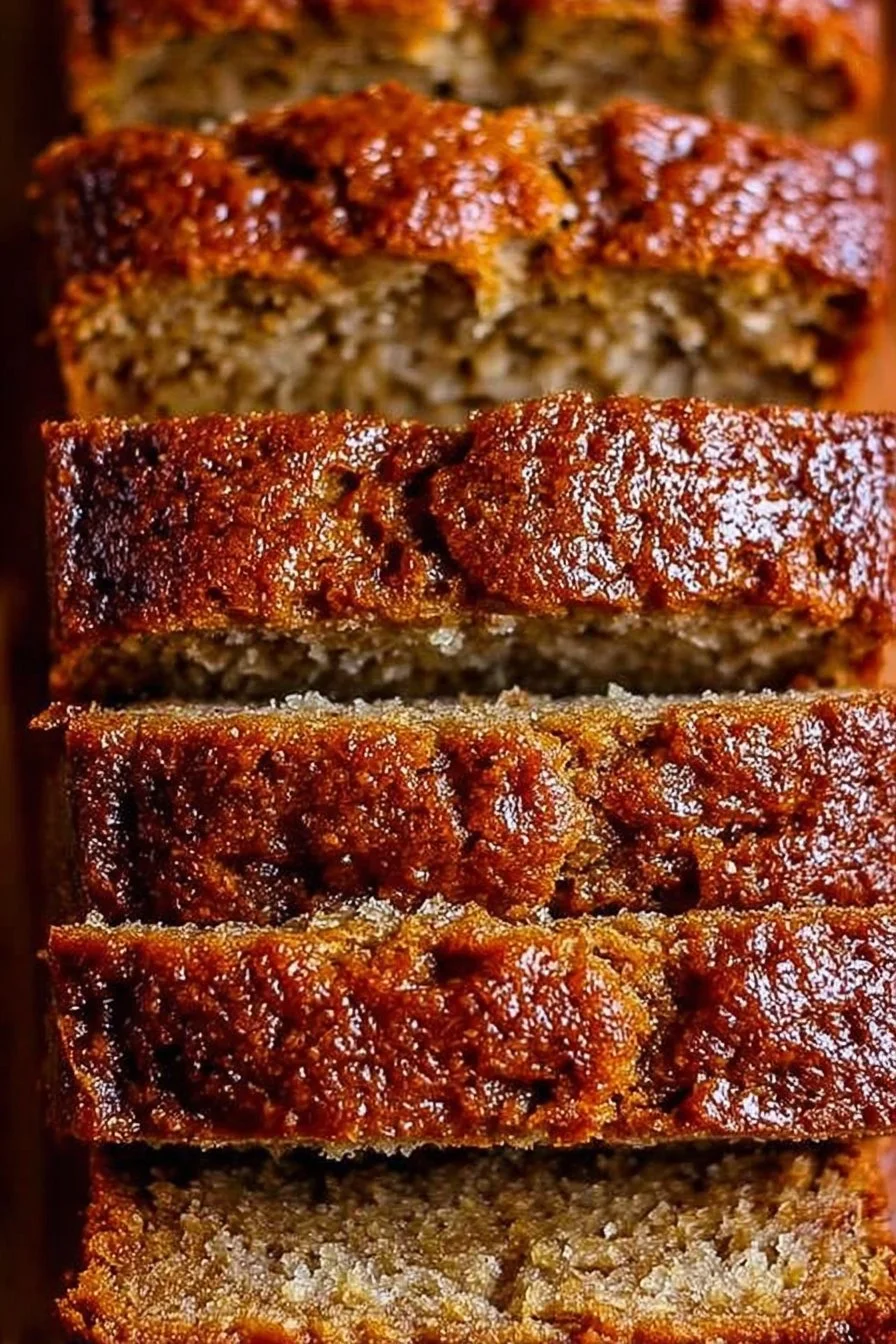I wasn’t planning to make scones that morning. Honestly, I just wanted cinnamon rolls but didn’t want to wait. You know that kind of craving? Where you picture something warm, sweet, comforting… but the clock and your energy levels aren’t on the same page? That was me.
So I opened the fridge, spotted some sour cream, and thought, “Okay, maybe I can cheat a little.”
The result? These cinnamon roll scones. Flaky, tender, a little crisp on the edges, with a swirl of brown sugar and cinnamon that melts just enough to feel indulgent but still totally manageable for a Tuesday morning. Are they perfect? Not even close. But I’d make them again in a heartbeat.
And maybe that’s the thing. I used to chase perfection in the kitchen. Perfect layers, perfect photos, perfect… everything. These days, I care more about how food makes people feel. The quiet smile from my daughter after the first bite. The way the house smells while they bake. The little pause I get when I finally sit down with one and a lukewarm cup of coffee.
That’s what these are about.
If you’ve got a bowl, a spoon, and about 10 minutes of quiet time (or loud chaos, that works too), I think you’ll love them.
Why You’ll Love These Cinnamon Roll Scones
Cinnamon Roll Scones might sound like a baking gimmick until you try them. There’s this unexpected moment with the first bite: the flake, the warmth, the swirl of cinnamon sugar that hits like a cozy memory you didn’t know you missed. They don’t ask for attention, but somehow they get it.
Let’s be honest: scones have a bit of a reputation. Dry. Crumbly. Kinda… meh? But not these. These are buttery and soft in the middle, with just enough structure on the outside to give you that gentle snap. And that swirl? Oh, it’s not just for looks. It melts into the dough in places, crisping in others, and leaves you wondering how something this simple ended up tasting this layered.
What I love most about these cinnamon roll scones besides how they disappear embarrassingly fast is how low-stress they are. No yeast, no rising time, no fear of overproofing. You mix, roll, freeze, and bake. That’s it. They’re humble but quietly impressive. Like the friend who shows up in leggings and still looks put together.
They also hit that sweet spot of “homey but giftable.” Want to bring something to a brunch? These. Need a make-ahead bake for a weekend gathering? Also these. Just want your kitchen to smell like brown sugar and happiness for no real reason? Definitely these.
And no, they’re not trying to be a perfect cinnamon roll. That’s the whole point.
Table of Contents
Ingredients You’ll Need for Cinnamon Roll Scones
This recipe keeps things simple and honestly, that’s part of what makes it work so well. You’re not digging through obscure pantry items or running out for specialty flour. If you bake even semi-regularly, chances are you already have most of this on hand.
Scones
- 1 egg
- 95 g sour cream (⅓ cup + 1 tbsp)
- 2 tsp vanilla
- 240 g all-purpose flour (2 cups)
- ½ tsp salt
- 1 tbsp baking powder
- 35 g light brown sugar (3 tbsp)
- 113 g unsalted butter, cold and cubed (8 tbsp)
Cinnamon Filling
- 28 g unsalted butter (2 tbsp)
- 35 g light brown sugar (3 tbsp)
- 1 tbsp ground cinnamon
Vanilla Glaze
- 60 g powdered sugar (½ cup)
- 1 tsp vanilla
- 1–2 tsp milk
Every ingredient here plays a role: butter gives these cinnamon roll scones their flaky layers, sour cream keeps the texture soft, and that cinnamon-brown sugar combo? It’s what turns a good scone into something crave-worthy. If you need to swap anything (say, Greek yogurt for sour cream), it’ll still work but stick to the real stuff if you can.
Step-by-Step Instructions for Cinnamon Roll Scones
Alright, if you’re anything like me, your counter’s probably already a little floured just from reading this. That’s good. Baking should be a little messy. These cinnamon roll scones come together in steps that sound simple, but have a certain rhythm once you’re in them. Just take your time. It’s not about being perfect.
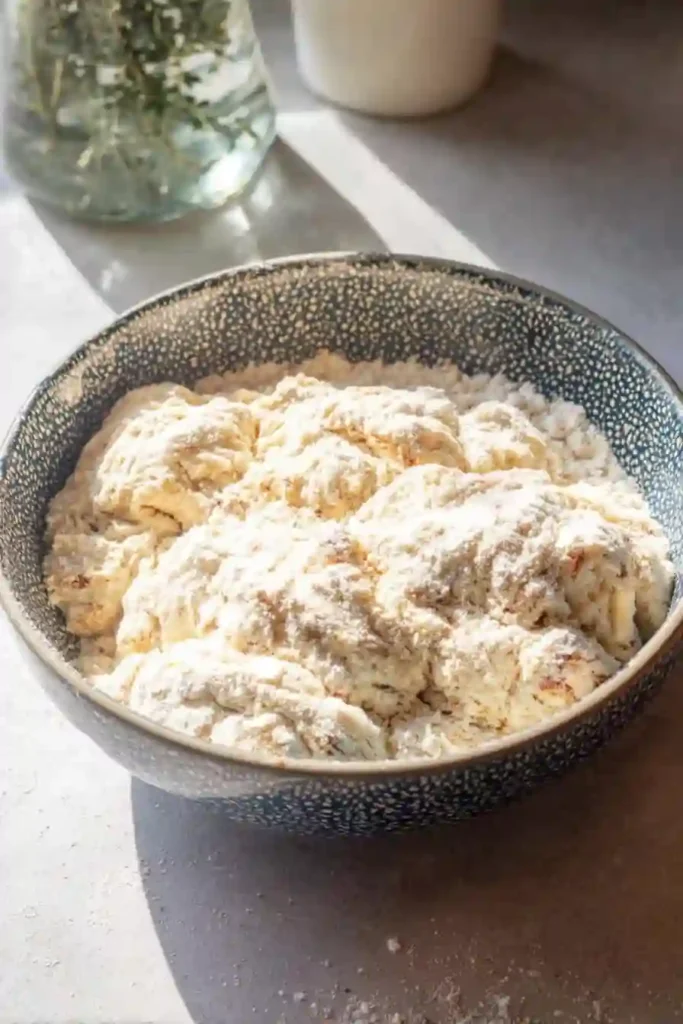

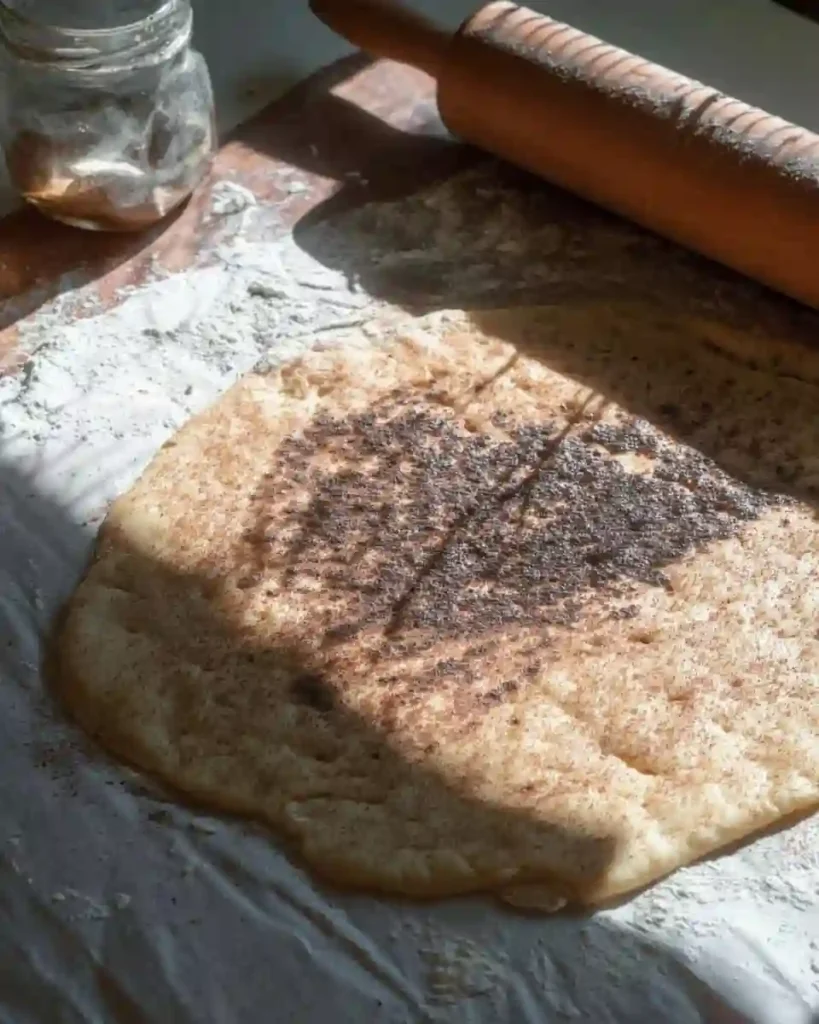
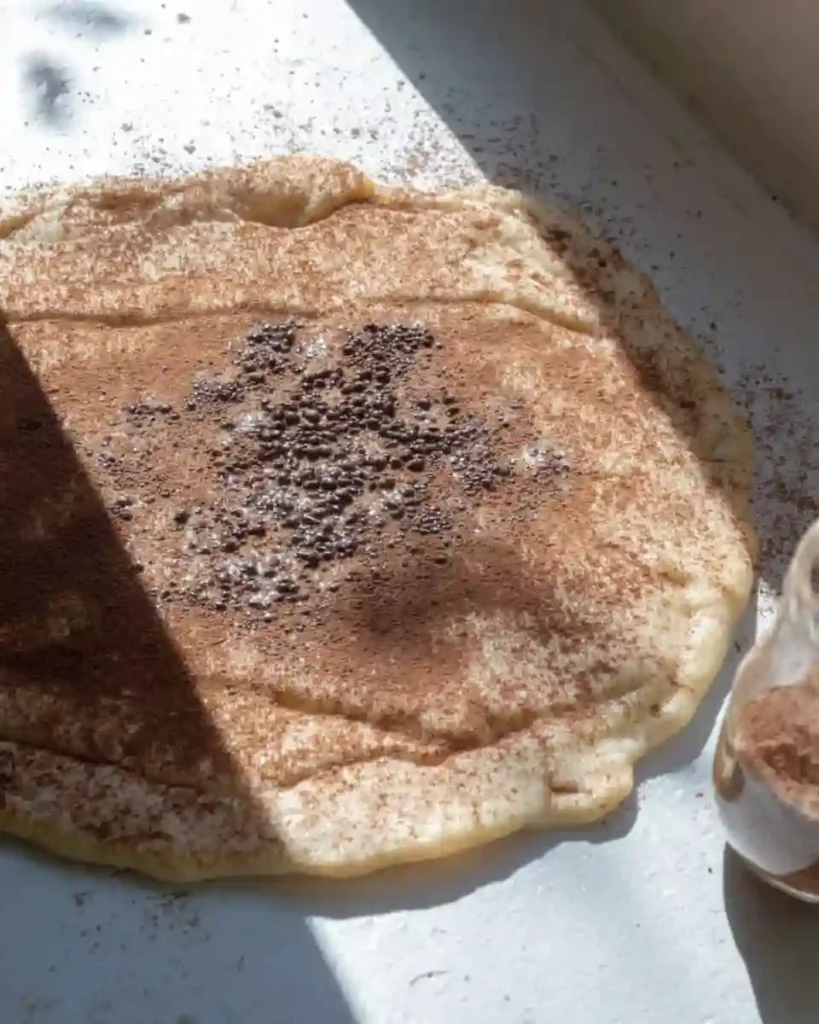
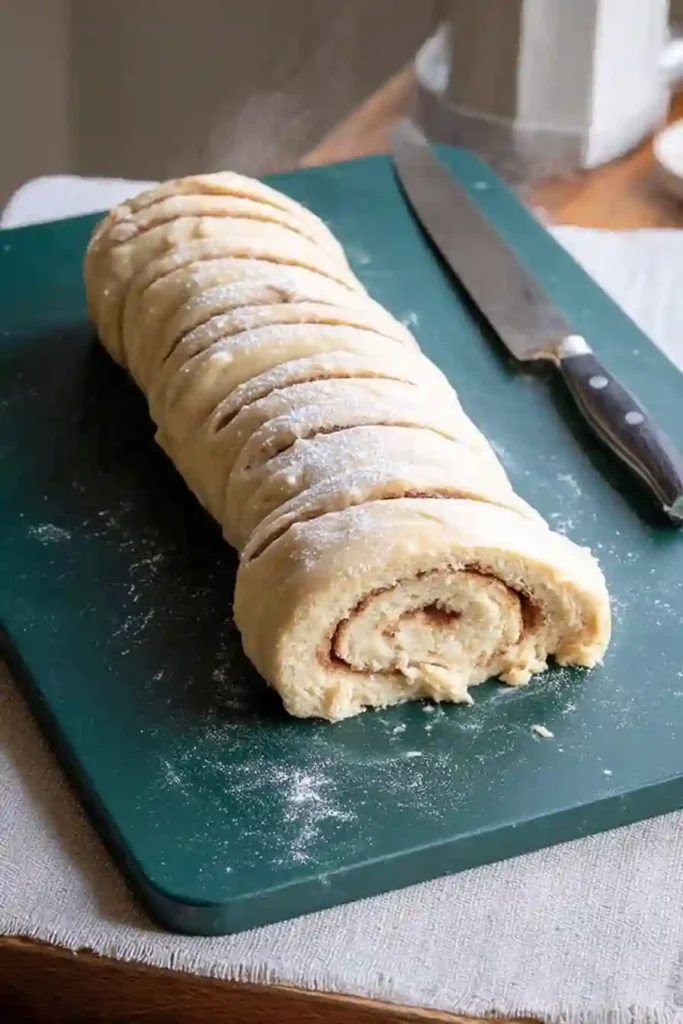

Step 1: Mix the wet stuff
Crack the egg into a small bowl, whisk in the sour cream and vanilla. Nothing fancy. I usually do this first so I can tuck it back in the fridge while I deal with the flour. Cold ingredients are your friend here, even if that sounds like baker superstition. It’s not.
Step 2: Add the butter to the dry
In a bigger bowl, stir your flour, baking powder, salt, and sugar together. Then grab your cold butter cut it into cubes, or just kind of chunk it in if you’re short on time and start pressing it into the flour with your fingers. Not too long. You want little bits of butter still hanging out. It shouldn’t feel smooth.
Step 3: Bring it together
Pour your wet mixture into the dry and fold it slowly. The dough should look messy, kind of patchy. Don’t try to fix it. Just press it together with your hands until it mostly holds. If it’s falling apart, give it a couple gentle turns on the counter and let it be.
Step 4: Roll and fill
Now roll the dough into a rectangle. Not a perfect one. It’s fine if it’s lopsided. Mix the filling and spread it gently over the top. Try not to overdo it or it’ll squish out when you roll. Then roll it up kind of like a jelly roll. It might feel soft or a little uneven. Wrap it tightly and freeze it.
Step 5: Slice, bake, breathe
After about an hour in the freezer, pull it out and slice into triangles. Place them on a lined baking sheet. Bake until the edges are golden and your kitchen smells like something between a holiday morning and a bakery you can’t afford to eat at every day.
Step 6: Glaze with your heart
Whisk the glaze until it looks pourable. Then drizzle it however you want spoon, fork, whatever. I like it when it runs down the sides a little. Makes them look homemade, which they are. Which is kind of the point.
Expert Tips for Scone Success
Let’s be real scones have a reputation. Dry. Crumbly. The kind of thing you chew through politely at a brunch because someone made them. But when they’re done right? Game changer. These cinnamon roll scones can absolutely be that kind of scone the one that disappears before the coffee even cools.
Here are the little things that make a big difference.
1. Use a scale if you can
I know, I know measuring cups are easier. But honestly, if you’ve ever wondered why your bakes turn out different every time, it might come down to flour. Too much and your scones will lean more “desert” than “dessert.” A scale gives you the best shot at soft, flaky layers instead of dry disappointment.
2. Keep everything cold
Butter should be cold. Sour cream? Cold. That egg you whisked? Yep, cold too. The cold keeps the butter from melting too soon, which means it steams in the oven and creates those soft, airy pockets. Warm butter just melts into the dough and flattens the whole vibe.
If your kitchen runs warm or you just took too long scrolling between steps, pop the dough into the freezer for 5–10 minutes. It makes a difference.
3. Don’t overwork the dough
This is not bread. You’re not building gluten. Once the dough starts to come together, stop kneading. Rough edges are fine. Shaggy is good. Your goal is just enough mixing to hold things together.
4. Freeze before baking
I used to skip this part, thinking it was optional. It’s not. Freezing helps everything set so the scones bake up tall instead of slumping. Wrap the dough tight and give it at least 30 minutes. If you’re baking straight from the freezer, just add a minute or two to the bake time.
Common Mistakes to Avoid When Making Cinnamon Roll Scones
Even if you’ve made scones before, these cinnamon roll scones have a few quirks. Not deal-breakers, but enough that skipping a step or getting a little too confident can lead to something… less delightful than you imagined. I’ve learned the hard way, so here’s what to watch for.
Mistake #1: Forgetting to chill the dough
Look, I’ve tried to cut corners here more times than I’ll admit. The truth? Warm dough spreads. Cold dough holds its shape. When you skip the freezer step, your cinnamon roll scones might bake up flat or uneven and they’ll miss that soft-center-meets-crisp-edge texture you’re really after.
Mistake #2: Overmixing (yes, again)
I know I said it before. Still worth repeating. Once the dough starts holding together, stop. It’s tempting to smooth it out or make it look neat, but rough and messy is the goal here. Overmixing activates gluten, and suddenly you’ve got chewy scones. Nobody’s asking for that.
Mistake #3: Expired baking powder
Sounds small, right? But stale baking powder means zero lift. No fluff. Just dense little triangles that make you wonder what went wrong. If it hasn’t fizzed in water, toss it. Cinnamon roll scones rely on that rise to create height and softness.
Mistake #4: Too much flour
This one sneaks in. You’re dusting the counter, you’re trying to keep things from sticking, and suddenly your dough feels like clay. The fix? Use a scale if you can. If not, measure carefully and resist the urge to “just add a little more.” That little more? It adds up.
Variations & Substitutions for Cinnamon Roll Scones
You know what happens once you’ve made something a few times? You start asking “what if.” What if I added nuts? What if I made these cinnamon roll scones a little less sweet… or way more indulgent? That’s when a recipe starts to feel like your own.
Here are a few spins that’ve worked for me and a couple I didn’t expect to love but now kind of depend on.
If you’re baking for a dairy-free or vegan crew
Cinnamon roll scones are usually pretty dairy-forward think butter, sour cream but if you’re working around that, you still have options. Use a firm vegan butter, not one of those spreads that melts at room temp. For sour cream, a thick plant-based yogurt with some tang works surprisingly well.
Egg? You can skip it with a flax egg or even a spoonful of applesauce. The texture shifts a bit, but they still taste like cinnamon and comfort and warm weekend mornings.
If gluten’s off the table
A 1-to-1 gluten-free flour blend gets you pretty close. Choose one with xanthan gum already in the mix. The dough will feel slightly more fragile, but baked? You’d hardly notice. These gluten-free cinnamon roll scones still rise, flake, and disappear from the plate fast.
Want to remix the filling?
There’s so much room to riff here.
- Add a handful of chopped nuts
- Swap cinnamon for cardamom or chai spice
- Try dark brown sugar for deeper flavor
- Throw in a little orange zest just trust me
If you want your cinnamon roll scones to lean toward dessert, stir in chocolate chips. Or do both. The dough can handle it.
When the glaze wants a glow-up
Some days you want simple vanilla drizzle. Other days? You want something extra.
- Add a splash of maple syrup
- Stir in cream cheese for a richer glaze
- Or skip the glaze entirely if you’re going minimalist (they’re good enough without)
Storage Tips & Freezing Instructions for Cinnamon Roll Scones
These cinnamon roll scones are best fresh no question. Still warm, edges just crisp enough, glaze soft but not runny. But real life rarely lets us enjoy things exactly when they’re perfect. So here’s how to make them last without losing what makes them great.
If you’re storing them on the counter
After baking, let the cinnamon roll scones cool completely before storing. Airtight container, single layer if you can. If you’ve already glazed them, use parchment or wax paper to separate. They’ll stay good for two days at room temp, maybe three, but by day three you’ll want to reheat them a little.
I usually go low oven for about 6 minutes. Toaster oven works too. Microwave? Only if you’re desperate it softens the crust.
If you want to freeze the dough
This is actually my favorite trick. After shaping the cinnamon roll scones into a log, wrap it well plastic wrap first, then a freezer bag. It’ll keep for weeks. When you want to bake, slice straight from frozen and bake like normal. Maybe give it 2 extra minutes in the oven. That’s it.
It feels like a win, every time. Like you prepped something for future-you, and that version of you is now grateful.
Freezing them after baking
Let’s say you baked a batch but you’re not trying to eat all eight in a weekend (no judgment). Cool them completely, wrap individually, and freeze. Reheat from frozen in the oven for about 10 minutes. Add glaze after warming, not before freezing.
Try these Carrot Cake Cookies for a spiced, soft bite that feels like fall in every chew.
Or go bright and zesty with Lemon Meringue Pie Cookies a sunny twist on classic flavors.
More Scones to Try
After you make these cinnamon roll scones once, something shifts. Suddenly, you start seeing everything through a “could this be a scone?” lens. And honestly… a lot of things could. If you’re feeling that itch to keep baking, here are a few others that have earned a spot in my repeat rotation.
- Vanilla Bean Scones
Soft, subtle, and full of that barely-sweet flavor that makes you slow down a little. I like these best with coffee and quiet. They’re humble in the best way. - Blood Orange Scones
Bright and tart, with just enough sweetness to balance it out. The glaze on these is what gets people. Not too sugary. Just citrus-forward and kind of addicting. - Eggnog Scones
These are a holiday thing… but not strictly. I’ve made them in spring and didn’t feel even a little bad about it. The warm spices, that tiny bit of nutmeg it works year-round if you’re into cozy. - Blackberry Lavender Scones
I’ll be honest, I wasn’t sure about these at first. But they’re lovely. Floral but not perfumey. Fruity but not jammy. Like cinnamon roll scones, they hit that comfort-meets-surprise note.
If cinnamon roll scones were your gateway bake, these are the ones you’ll reach for next not because you have to, but because now you’re curious.
Final Thoughts on Cinnamon Roll Scones
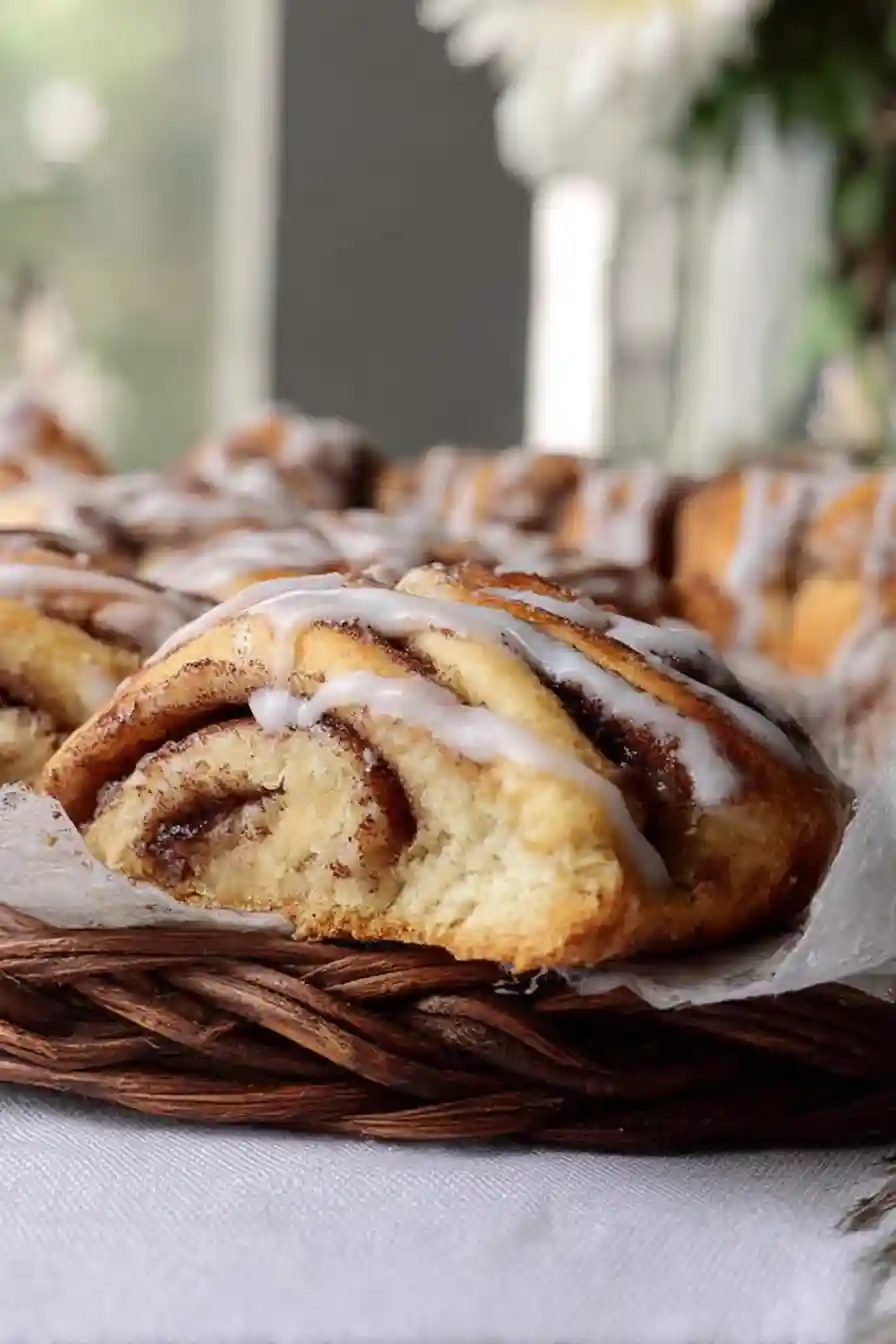
Honestly, I almost didn’t include a conclusion. It felt weird to try and wrap up something like cinnamon roll scones as if a few words could really summarize why they matter. But here we are.
I guess what I keep coming back to is this: sometimes a recipe is more than just steps and ingredients. Sometimes it’s just a way to slow down, even for a little bit. To make your kitchen smell like warmth. To do something with your hands that’s quiet and grounding. These cinnamon roll scones did that for me.
Maybe you’ll bake them once and move on. Maybe they’ll become your Sunday thing. Either way, I hope they give you that tiny pause you didn’t know you needed.
Thanks for being here. And for baking, even if it’s messy and imperfect. That’s kind of the whole point.
How to Make Cinnamon Roll Scones That Delight Every Bite
These cinnamon roll scones are flaky, buttery, and filled with a gooey brown sugar swirl and vanilla glaze. A cozy, simple twist on the classic that’s perfect for your next weekend bake.
- Prep Time: 25 minutes
- Cook Time: 15 minutes
- Total Time: 1 hour 40 minutes
- Yield: 8 scones 1x
- Category: Breakfast, Brunch
- Method: Baking
- Cuisine: American
Ingredients
Scones
1 egg
95 g sour cream (⅓ c. + 1 tbsp.)
2 tsp. vanilla
240 g all purpose flour (2 c.)
½ tsp. salt
1 tbsp. baking powder
35 g light brown sugar (3 tbsp.)
113 g unsalted butter, cold and cubed (8 tbsp.)
Cinnamon Filling
28 g unsalted butter (2 tbsp.)
35 g light brown sugar (3 tbsp.)
1 tbsp. ground cinnamon
Vanilla Glaze
60 g powdered sugar (½ c.)
1 tsp. vanilla
1–2 tsp. milk
Instructions
1. Whisk the egg, sour cream, and vanilla in a small bowl. Chill while prepping dry ingredients.
2. In a large bowl, stir together flour, baking powder, salt, and sugar. Add cold butter and work it into the dry mix using your fingers or a pastry cutter until pea-sized.
3. Pour the wet ingredients into the dry and gently mix just until a shaggy dough forms. Knead briefly to bring it together.
4. Roll the dough into a rough 10×14” rectangle. Stir together melted butter, brown sugar, and cinnamon, and spread it evenly over the dough.
5. Roll the dough from the long side into a log. Wrap in plastic wrap and freeze for 1 hour.
6. Preheat oven to 425°F (220°C). Slice the log into 8 triangle pieces. Space evenly on a lined baking sheet.
7. Bake for 12–15 minutes, until edges are golden brown. Let cool before glazing.
8. Whisk powdered sugar, vanilla, and milk into a pourable glaze. Drizzle over cooled scones.
Notes
Chilling the dough is essential for flaky layers don’t skip it.
Bake straight from frozen, adding 1–2 minutes if needed.
Store leftover scones in an airtight container or freeze unbaked slices for later.
Nutritional values are approximate and intended for general guidance only. While we strive for accuracy, the actual nutrition of any recipe may vary based on ingredients and preparation methods.
Nutrition
- Serving Size: 1 scone
- Calories: 341
- Sugar: 17g
- Sodium: 333mg
- Fat: 17g
- Saturated Fat: 10g
- Unsaturated Fat: 5g
- Trans Fat: 1g
- Carbohydrates: 42g
- Fiber: 2g
- Protein: 4g
- Cholesterol: 65mg
FAQ
Can I use salted butter in cinnamon roll scones?
Yes, but reduce or omit the added salt in the dough. Unsalted butter gives better flavor control especially with warm spices like cinnamon.
Why freeze the dough before baking?
Freezing helps the butter stay firm so it steams in the oven, creating soft, flaky layers. Warm dough spreads, cold dough puffs it really matters.
What’s the secret to moist scones?
Cold butter, full-fat sour cream, and minimal mixing. Bake just until golden. Cinnamon roll scones should be soft inside, never dry.
What is the 15 minute rule for scones?
It’s a quick chill before baking. Resting the dough in the fridge or freezer helps it firm up, which gives cinnamon roll scones a better rise and flakier texture.
What is a dirty cinnamon roll?
It’s the extra-indulgent version: more filling, more butter, maybe chocolate or pecans. If you want your cinnamon roll scones to be dirty, go heavier on the swirl and fillings.
Can I make cinnamon roll scones ahead of time?
Yes. Shape the dough, wrap and freeze it. Bake directly from frozen just add a minute or two. Or chill it overnight and bake the next morning. Either way, your cinnamon roll scones stay fresh and easy.



